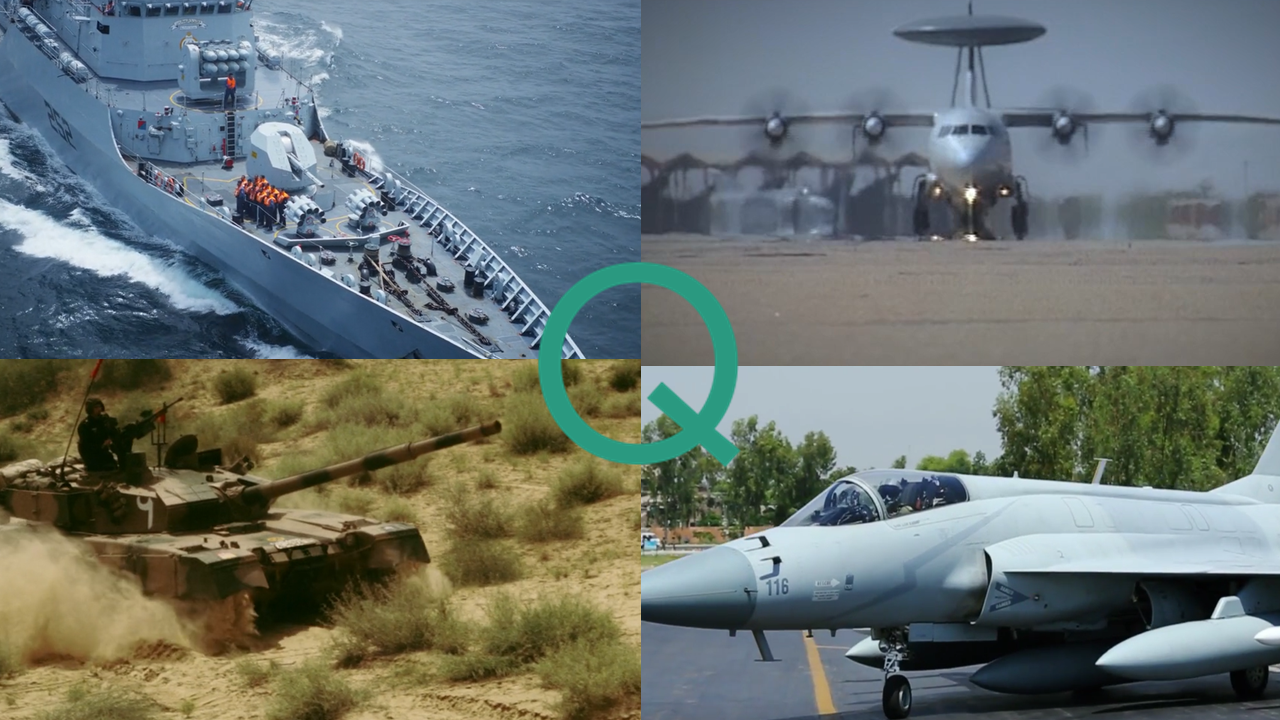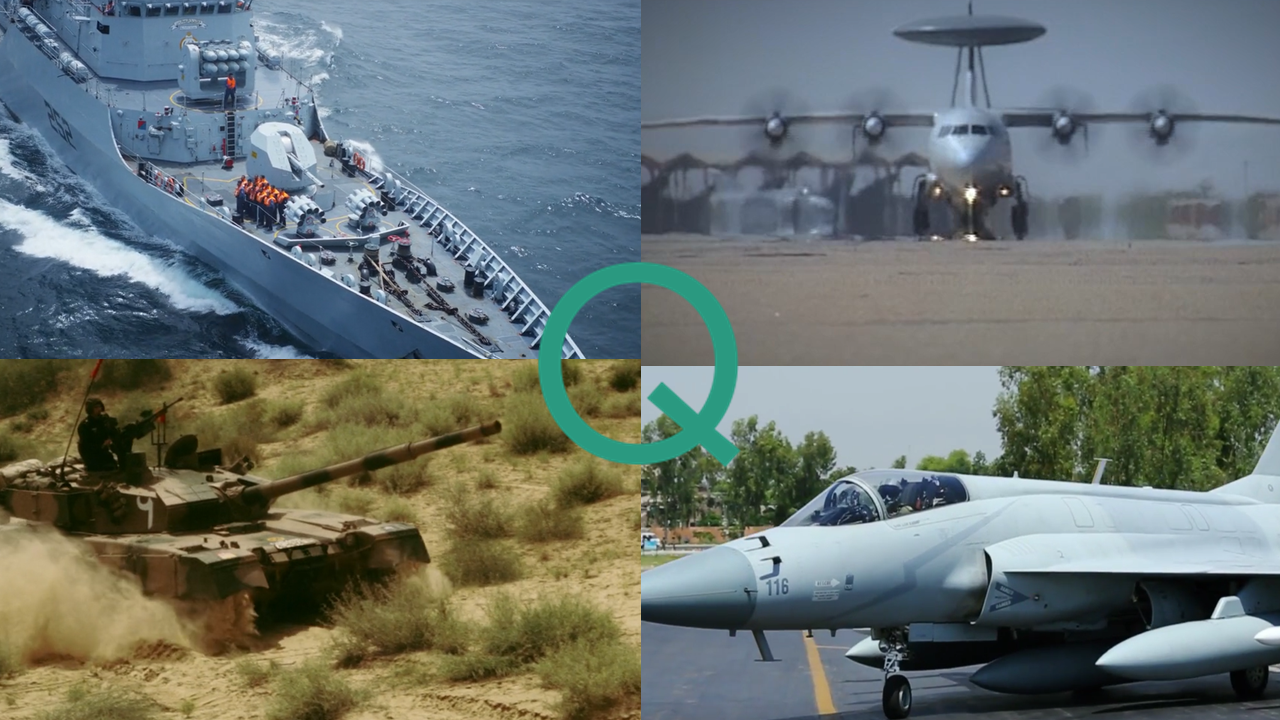3104Views 1Comment

This Week in Defence News
15 January 2016
Every Friday, Quwa offers coverage and short-form analysis of various news topics. It is difficult to offer in-depth coverage of every interesting piece of news, especially in areas unfamiliar to the staff, but this could be an effective means of gradually building that expertise.
We also invite our readers to suggest topics by Facebook and Twitter
Russia orders 50 Sukhoi Su-35S
Not long after two factory-fresh Su-35S (the last of an initial order of 48 planes) were delivered to Russia’s Eastern Military District (EMD), the Russian Air Force placed an order for an additional 50 Su-35S multi-role fighters from the United Aircraft Corporation (UAC), Sukhoi’s parent company.
The $1.4 billion U.S. order, which probably accounts for only the airframe (i.e. absent of onboard electronics, radar, etc), will play a major role in modernizing the Russian Air Force.
Along with its sibling, the Su-34, the Su-35S has drawn interest from numerous air forces from around the world; China became its first export customer with an order for 24 fighters valued at $2 billion U.S. Having selected the Su-35 to replace its ageing F-5 Tiger II, Indonesia may emerge as the second export customer.
Sri Lanka JF-17 sale cancelled?
While it was widely hoped that a JF-17 sale to Sri Lanka would be secured during Nawaz Sharif’s visit to Colombo, numerous news outlets have reported that the deal had collapsed due to significant pressure from India. IHS Jane’s 360 was able to acquire specific details into the apparently defunct deal, which was valued at $400 million U.S. for 10-12 fighters.
Big ticket arms sales are not easy to secure, especially for Pakistan, a relatively new entrant to the global defence industry. With limited political and economic currency, Pakistan will continue finding it difficult to enter markets influenced by actors with whom it has conflicting interests.
In any case, the JF-17 Block-II is on-track to continue the extensive process of replacing Pakistan’s legacy fighters, such as the F-7P and Mirage III/5. At this stage, all eyes are on the yet-to-be shown twin-seat variant. Could that, alongside a clearer look at the Block-III, generate the momentum needed to secure sales?
Pakistan’s F-16 hopes hit a snag in Congress
Despite an apparent improvement in ties and Pakistan’s strong surges against the Taliban, the proposed sale of eight new-built F-16s has run into higher than expected opposition from Congress.
Concerned American lawmakers reportedly raised the concern of Pakistan using the F-16s “against [its] own people”. Currently, the near-entirety of the PAF’s current air campaign is focused on the Taliban.
The deal is not dead, but the delay would require continued work from the White House. However, numerous analysts are skeptical that the Obama administration would be interested in such a task.
A total collapse in the sale would not cause immediate effects to Washington’s ties with Islamabad, but it will certainly add to the widespread public antipathy and establishment skepticism towards Washington.
Having spent nearly 15 years building its presence in the nuclear-armed Muslim-majority country, it will be interesting to see whether the White House will consider Congress’ decision a potential risk.
Russia will develop the IL-214 utility transport aircraft without India
Originally envisioned as a joint Indo-Russian program, the IL-214 (also known as the Medium Transport Aircraft or MTA) will proceed, but without India, who had intended to join the program in 2007 as a means to replacing its ageing An-32 twin-engine turboprop transport aircraft.
Differences over the powerplant may have been a major reason behind the collapse of the joint-program.
According to IHS Jane’s 360, Russia’s United Aircraft Corporation (UAC) wanted to utilize a variant of the IL-76’s engine on the MTA, but Hindustan Aeronautics Limited (HAL) preferred a new design with FADEC [full authority digital engine control].
It is important to note however that this is not the only initiative between Moscow and New Delhi to have met obstacles. The greatly anticipated Fifth Generation Fighter Aircraft (FGFA), which was to be based on the Sukhoi T-50 program, was not finalized during Prime Minister Modi’s visit to Russia at the end of 2015.
Although the two countries still maintain close defence ties, it is evident that India is increasingly drawing upon the support of Western vendors as well as its indigenous industry to meet its needs. It will be interesting to see how Russia is impacted by these shifts in the medium and long-term.
Israel will soon induct an indigenously developed precision-guided rocket
IHS Jane’s 360 reported that the Israeli Military Industries (IMI) Romah, a GPS-guided rocket, will soon enter service with the Israeli Defence Forces’ (IDF) Artillery Corps.
The IMI Romah is armed with a 20kg warhead and is capable of reaching distances of up to 35km with an accuracy of (based on circular error probable or CEP) less than 10 metres. The Romah will be fired using the IDF’s M270 Multiple-Launch Rocket Systems (MLRS).
Modern day rockets, such as the Hydra 70, have been in use since the Second World War. These are unguided munitions that can be used from a wide range of airborne and land-based platforms.
The Hydra 70 and its contemporaries cost a fraction of guided missiles such as the Hellfire II. With the increasing affordability of various types of guidance technology, one could transform these rockets into low-cost, but relatively effective, precision-guided munitions.
In the case of the IMI Romah, it is worth noting that it is an exception amongst its peers in that it does not use laser or imaging infrared (IIR) seekers to support the GPS kit.
Eli Reiter, the head of IMI’s Rocket Systems Division, told Israel Defense that the focus on GPS over laser and IIR is a key strategy.
It seems IMI was focused on developing a competitively priced munition that is centrally focused against fixed structures, irrespective of weather or time of day, which is precisely the focus of satellite-aided targeting. Laser and IIR are more suitable for moving targets; for the IDF, such a need could be met through alternative systems, such as the ATK/Elbit Guided Advanced Tactical Rocket (GATR).


1 Comment
by Abdul Rashid
Hi Bilal,
It is very disappointing to not see PAF perform and display the JF-17 at Bahrain air show this year. It would have been the best time alongside India’s LCA Tejas. Competition is healthy!
You seem to be well informed with links to inside sources. Maybe you can shed some light on this. It must be bugging a lot of minds.
Thanks.